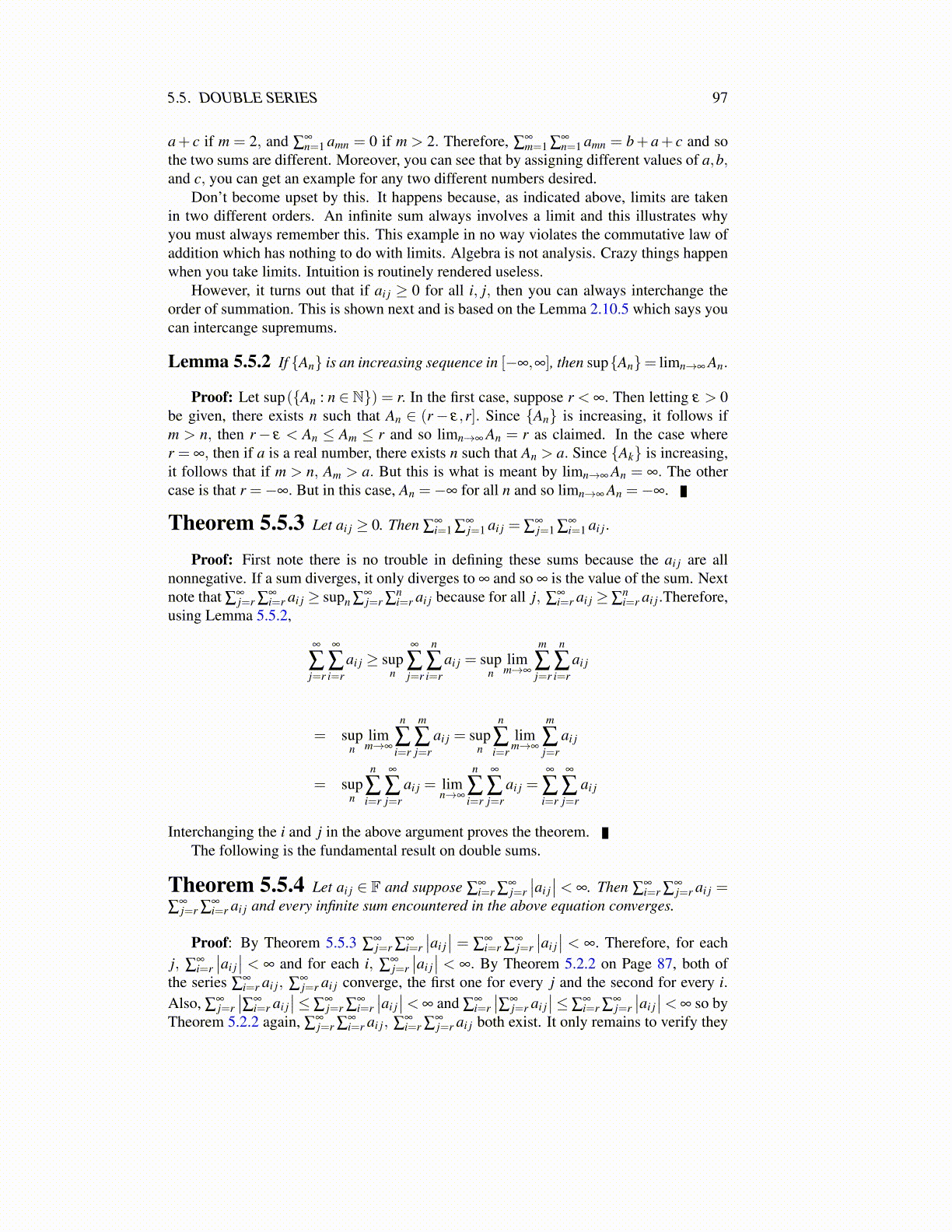
5.6. EXERCISES 97
5.6 Exercises1. Determine whether the following series converge absolutely, conditionally, or not at
all and give reasons for your answers.
(a) ∑∞n=1 (−1)n 2n+n
n2n
(b) ∑∞n=1 (−1)n 2n+n
n22n
(c) ∑∞n=1 (−1)n n
2n+1
(d) ∑∞n=1 (−1)n 10n
n!
(e) ∑∞n=1 (−1)n n100
1.01n
(f) ∑∞n=1 (−1)n 3n
n3
(g) ∑∞n=1 (−1)n n3
3n
(h) ∑∞n=1 (−1)n n3
n!
(i) ∑∞n=1 (−1)n n!
n100
2. Suppose ∑∞n=1 an converges. Can the same thing be said about ∑
∞n=1 a2
n? Explain.
3. A person says a series converges conditionally by the ratio test. Explain why hisstatement is total nonsense.
4. A person says a series diverges by the alternating series test. Explain why his state-ment is total nonsense.
5. Find a series which diverges using one test but converges using another if possible.If this is not possible, tell why.
6. If ∑∞n=1 an and ∑
∞n=1 bn both converge, can you conclude the sum, ∑
∞n=1 anbn con-
verges?
7. If ∑∞n=1 an converges absolutely, and bn is bounded, does ∑
∞n=1 anbn always converge?
What if it is only the case that ∑∞n=1 an converges?
8. Prove Theorem 5.4.4. Hint: For ∑∞n=1 (−1)n bn, show the odd partial sums are all no
larger than ∑∞n=1 (−1)n bn and are increasing while the even partial sums are at least
as large as ∑∞n=1 (−1)n bn and are decreasing. Use this to give another proof of the
alternating series test. If you have trouble, see most standard calculus books.
9. Use Theorem 5.4.4 in the following alternating series to tell how large n must be sothat
∣∣∣∑∞k=1 (−1)k ak−∑
nk=1 (−1)k ak
∣∣∣ is no larger than the given number.
(a) ∑∞k=1 (−1)k 1
k , .001
(b) ∑∞k=1 (−1)k 1
k2 , .001
(c) ∑∞k=1 (−1)k−1 1√
k, .001
10. Consider the series ∑∞k=0 (−1)n 1√
n+1. Show this series converges and so it makes
sense to write(
∑∞k=0 (−1)n 1√
n+1
)2. What about the Cauchy product of this series?
Does it even converge? What does this mean about using algebra on infinite sums asthough they were finite sums?
11. Verify Theorem 5.5.6 on the two series ∑∞k=0 2−k and ∑
∞k=0 3−k.